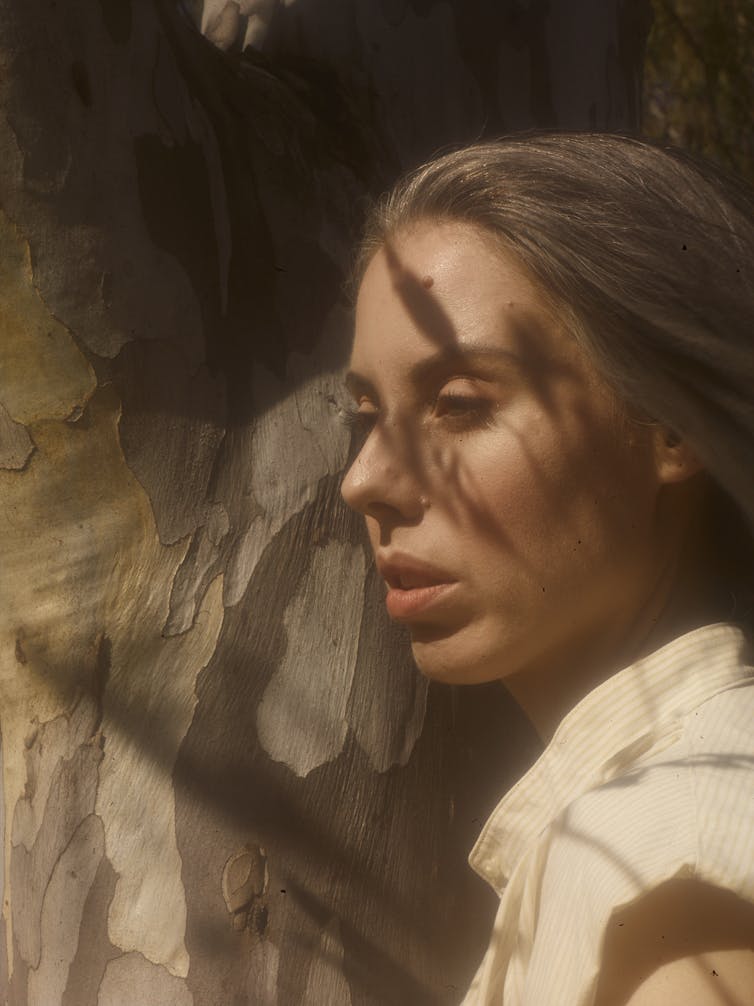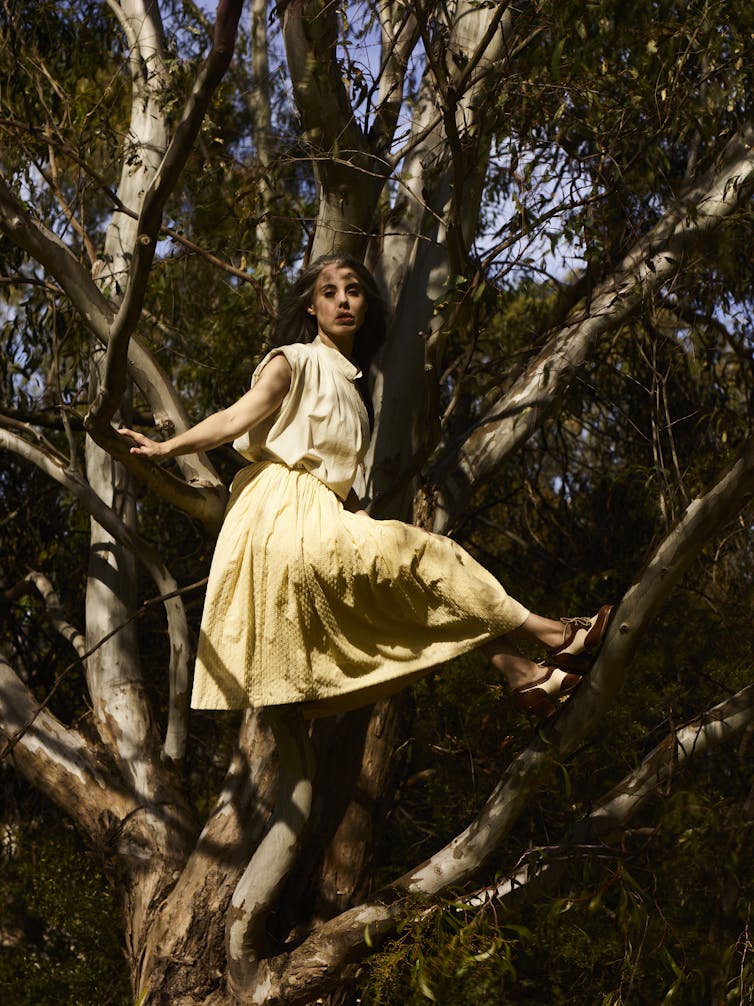Source: The Conversation (Au and NZ) – By Moya Costello, Adjunct Lecturer, Southern Cross University

My first curiosities about the new opera Eucalyptus, an adaptation of Murray Bail’s multi-award-winning 1998 novel, were regarding how Ellen and the many stories told to her by her ultimately successful suitor would be portrayed.
Would Ellen be a victim of the plans of men, or would she forge her own path, as she does in the novel? Overall, I was relieved the opera remained largely faithful to Bail’s novel by recognising and respecting its various narrative pleasures.
Bail’s story centres on our protagonist, the famously beautiful Ellen (played by Desiree Frahn) and a eucalypt gum-naming competition set up by her father, Holland (Simon Meadows), to find her the perfect suitor. To Holland, little is more precious than his daughter and the hundreds of eucalyptus gums he has planted on his property. But Ellen vehemently rejects his plans for her.
The “storyteller” (Michael Petrucelli) is the unnamed wanderer Ellen stumbles upon in her father’s woods. He wins Ellen’s hand in marriage by naming all the gums (and does so inadvertently by creating name plaques which he then sells to Ellen’s father). Beyond this, he seduces Ellen with various tales of love, loss, death and deception.
Bail’s story comes to life
While Bail’s original story takes place at an unspecified time on “a property in western New South Wales”, director Michael Gow’s program notes a setting in the early 1960s.
The gums in the story are projected as images onstage, accompanied by characters and choristers (Brisbane Chorus) singing the eucalypts’ Latin names. The choristers also play the roles of Ellen’s many suitors.
The opera is composed by Jonathan Mills, conducted by Tahu Matheson and accompanied by the Queensland Symphony Orchestra. The first orchestration – in which Holland makes clear his questionable intentions for his daughter, leaving her in distress – appropriately strikes a sombre, discordant note.
Central to Bail’s story is a kind of anachronistic Anglo-Saxon Australian man (represented in various male characters across Bail’s fiction) who doesn’t understand women, and who deals in what he thinks of as facts and empiricisms, such as the (non-Indigenous) names of the gums.
Ellen, meanwhile, is seduced by art, nature, the imaginative and the propulsion of storytelling.
And although she finds herself in this unseemly transaction initiated by her father, living somewhat like a captured fairytale figure, Ellen still has agency: she roams freely, responds to nature, learns, thinks, judges, deduces and decides.
I’ve often thought Ellen’s character is partly based on Bail’s former wife, Helen Garner, who unravelled in the wake of her failed second marriage and the reception of her book-length essay, The First Stone.
Though many women are antipathetic to Bail’s general portrayal of women, academic Lyn Jacobs notes “a new sensitivity to the dynamics of gender” in Eucalyptus.

Opera Australia
The opera’s ensemble cast is energetically committed to the subtleties of characterisation. Frahn expertly captured Ellen’s sense of wonder. Similarly, Meadows convincingly captures Holland’s pathos: “I don’t want you riding their bikes, I don’t want you smoking their Lucky Strikes.”
Michael Petruccelli performs passionately as the storyteller, startlingly engaging both Ellen and the audience. And Mr Cave (Samuel Dundas), who at one point looks frighteningly close to becoming Ellen’s successful suitor, is more pompous, priggish and comedic in a white safari suit than his novel counterpart, who instead is a machine-like and almost stalker-ish figure.
Some noticeable points of difference
Gow’s direction is faultless in the first half of the production, but some minor issues discombobulated me in the second half, as I am unwilling to completely suspend belief when it came to Simone Romaniuk’s set design.
One example is when Ellen, the storyteller, Holland and Mr Cave all end up sitting among the choristers’ chairs, while these could have easily been removed in exchange for props used as rocks.
At one point, the storyteller also sits on the table in the house, whereas in the novel he (significantly) only enters the house once – to lay chastely with Ellen on her bed.
That said, I was pleased to see Ellen clothed by Romaniuk in a simple slip of a dress “faded to butter colour”, as described in the novel. Bail’s women characters often wear faded colours, or rhubarb and green. Holland, meanwhile, is in functional rather than sartorial braces.

Opera Australia
Meredith Oakes’ lyrically inventive and funny libretto falters at the end, recalling too much of a cheesy HBO romance film. The word “love” features heavily, when the optimal word is more relevantly “desire”, as per the original story.
The end of the opera in particular takes a noticeable departure from the original tale, in which Ellen’s desire for the storyteller is fundamental to the narrative. In the opera, however, she seems determinedly to take up her own, different destiny.
Many in the audience will possibly appreciate this resurgence of female agency.
![]()
Moya Costello does not work for, consult, own shares in or receive funding from any company or organisation that would benefit from this article, and has disclosed no relevant affiliations beyond their academic appointment.
– ref. Opera Eucalyptus is a lush adaptation of Murray Bail’s novel – with a modern twist – https://theconversation.com/opera-eucalyptus-is-a-lush-adaptation-of-murray-bails-novel-with-a-modern-twist-237979







